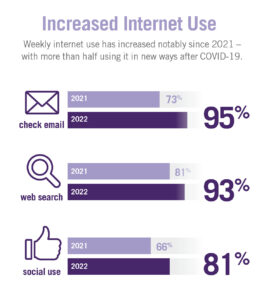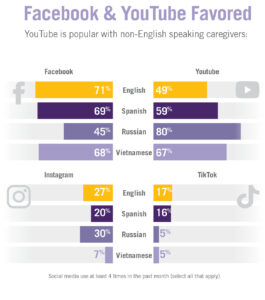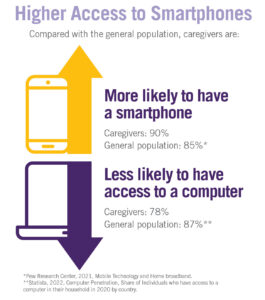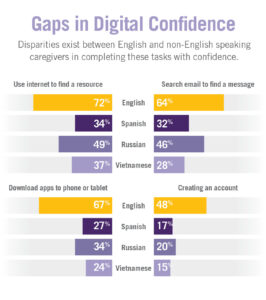Research Survey Provides Insight into Caregivers’ Technology Use
The ability to access and effectively utilize technology is critical. It shapes how we obtain information and navigate many day-to-day commitments and opportunities.
This is also true for caregivers, the professionals and family members who provide care for older adults and people with disabilities. However, due to historical and present day inequities, caregivers typically experience greater barriers to accessing economic, educational and technological resources.
Washington state’s caregivers are a unique subset of the state’s population. They are hourly wage-earning workers who largely work part-time and are overwhelmingly women. Their median age is 48 and they are disproportionately people of color and immigrants.
SEIU 775 Benefits Group is continuously evolving how we best support Washington state’s caregivers in accessing their training, health, retirement and job-matching benefits. Our desire to better understand the role of technology in making the most of their benefits prompted a multimodal survey (online, phone call and mail) of caregivers’ relationship with technology in 2022.
“Knowing the specific ways caregivers use technology – and their limitations and challenges – is crucial to helping caregivers make the most of their benefits.” – Hwayoung Chae, Senior Quantitative Researcher, SEIU 775 Benefits Group
The project surveyed more than 1,100 caregivers and was administered in English, Russian, Spanish and Vietnamese, the four languages most commonly spoken by our caregivers. The survey oversampled caregivers who speak non-English languages in order to be able to accurately quantify differences between language groups.
In addition to obtaining important findings about how caregivers utilize technology to access their benefits, the study highlighted other trends in caregiver technology use. Some of these include:
Compared with the general population, our caregivers were more likely to have a smartphone, but less likely to have access to a computer.
 Caregivers’ weekly completion of various internet-related tasks – including checking email, searching the internet for information and using social media – has increased significantly since 2021. More than half of our caregivers reported using technology in new ways since prior to the COVID-19 pandemic.
Caregivers’ weekly completion of various internet-related tasks – including checking email, searching the internet for information and using social media – has increased significantly since 2021. More than half of our caregivers reported using technology in new ways since prior to the COVID-19 pandemic.
Across an array of internet and technology-related tasks, gaps existed in completing tasks with confidence between English speaking caregivers and those who speak a language other than English.
 While Facebook was the overall most popular social media channel used by our caregivers, YouTube is a particularly popular social media site for caregivers who speak a language other than English.
While Facebook was the overall most popular social media channel used by our caregivers, YouTube is a particularly popular social media site for caregivers who speak a language other than English.
This type of understanding of caregivers’ technology habits provides critical data for strengthening our work to effectively communicate with caregivers about their benefits.
“Whether taking an online continuing education course or sending in a dependent verification form for their child’s insurance, technology touches all aspects of our work with caregivers,” said Hwayoung Chae, a Senior Quantitative Researcher at SEIU 775 Benefits Group and the lead investigator on this study. “Knowing the specific ways caregivers use technology – and their limitations and challenges – is crucial to helping caregivers make the most of their benefits.”
As both technology use and the need for caregivers increase rapidly, these insights provide better understanding for effectively communicating with caregivers, both at SEIU 775 Benefits Group and beyond. It’s our desire that our findings positively influence the quality of communications and services for all organizations supporting direct care workers.
Download the Caregiver Digital Technology and Internet Use infographic.
To learn more about the full technology survey, methodology or results, email research@myseiubenefits.org.





